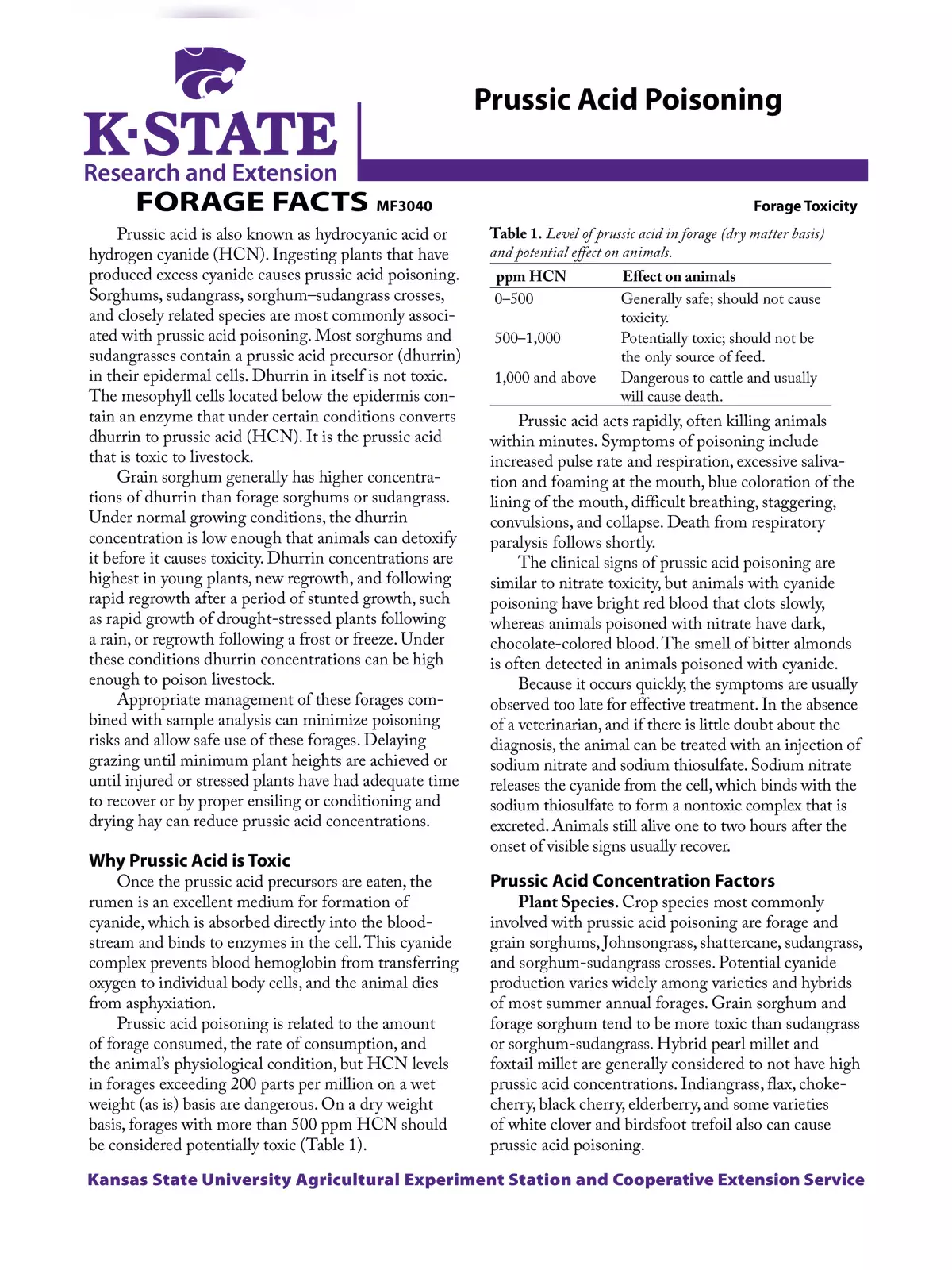Prussic Acid Poisoning in Humans - Summary
Download the essential facts about Prussic Acid Poisoning in Humans, including complete guidelines to avoid it. This PDF is a must-have resource for understanding what prussic acid poisoning is, as well as its plant factors, animal factors, sources of poison, signs of poisoning, treatment, diagnosis, prevention, and a lot more.
What is Prussic Acid Poisoning?
Prussic acid poisoning, also known as hydrocyanic acid poisoning, happens when someone gets in contact with prussic acid, a highly toxic substance. This poison can be found in various plants, and it can be very dangerous for both humans and animals.
Key Information on Prussic Acid Poisoning
Understanding the factors related to prussic acid is crucial. Here are some important points:
- Plant Factors: Certain plants, especially those in the sorghum family, can produce prussic acid under specific conditions, like drought or frost.
- Animal Factors: Livestock that graze on these plants are at risk, especially if they eat a large amount quickly.
- Source of Poison: Prussic acid is released when plants break down cyanogenic compounds, which are found in various seeds and leaves.
Being informed about the signs of poisoning is vital. Symptoms may include difficulty breathing, convulsions, and in severe cases, it can lead to death. Knowing how to treat and diagnose prussic acid poisoning can save lives.
The best way to prevent prussic acid poisoning is to educate ourselves and our communities about the dangers and ensure that livestock do not graze on potentially toxic plants. With the right knowledge, we can effectively manage the risks associated with prussic acid.
For a more detailed understanding, you can download the PDF with complete guidelines on “Prussic Acid Poisoning in Humans” below.
